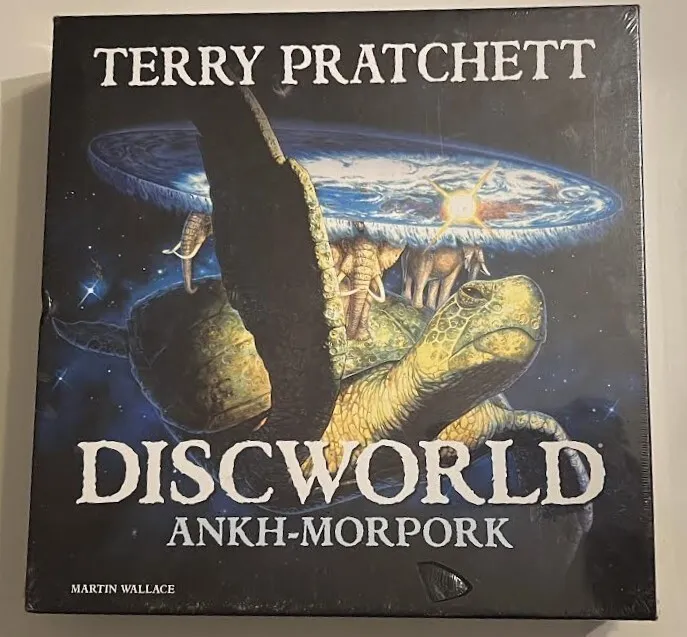Discworld: Ankh-Morpork (2011)
Discworld: Ankh-Morpork
Discworld: Ankh-Morpork is a board game set in the largest city-state in Terry Pratchett’s Discworld universe. It was designed by Martin Wallace and Treefrog Games and was published in 2011. The game revolves around the playing of cards and placing minions onto the board. Each player attempts to meet the win condition for the personality that they randomly and secretly selected at the start of the game. The game features many characters from the Discworld series, but players do not need to have any knowledge about the books. The premise of the game is that the patrician of Ankh-Morpork, Lord Vetinari, has disappeared, leaving an opening for somebody to come and take control of the city.
Why is Discworld: Ankh-Morpork Popular?
Discworld: Ankh-Morpork is popular among board game enthusiasts because of its unique Gameplay Mechanics of Discworld: Ankh-Morpork and the incorporation of characters from the Discworld series. The game has received positive reviews for its replayability and strategic depth. It is also significant because it is based on the Discworld universe, which has a large and dedicated fan base.
Game Components of Discworld: Ankh-Morpork
How To Setup Discworld: Ankh-Morpork
To set up the game, players split the card deck into two parts: the green deck and the brown deck. Each player is dealt a secret leader card that outlines their victory condition. The board is placed in the middle, and each player starts with a hand of cards. The game begins with the green deck, and as the game progresses, the brown deck is introduced, bringing new dynamics and challenges.
Gameplay Mechanics and Game Objective
Mechanics
Game Objective
Player Experience
**Discworld: Ankh-Morpork** offers a dynamic and strategic experience where players must balance their own objectives with the need to thwart their opponents. The game is filled with thematic references to the Discworld series, making it a treat for fans. However, it also presents a challenging and sometimes mean environment, with random events and player interactions that can significantly alter the game state. This makes for an engaging but potentially frustrating experience, especially for those who are not fond of direct conflict and random setbacks.
Pros
Cons
Personal Thoughts on Discworld: Ankh-Morpork
**Discworld: Ankh-Morpork** is ideal for fans of the Discworld series and those who enjoy strategic, area-control games with secret objectives. While it offers a rich and thematic experience, it may not be the best fit for players who prefer more cooperative or less confrontational games. The game shines with its complex gameplay and high replayability, making it a great addition to any board game collection, especially for those who appreciate the nuances of the Discworld universe.
We are supported by our audience. When you purchase through links on our site, we may earn an affiliate commission, at no extra cost for you. Learn more.

